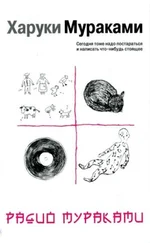Tomohiko Amada returned to Japan in February 1939, and settled into a rented house in Sendagi in Tokyo. By this point he had completely abandoned Western painting. But he still received an allowance every month from his family, so he wanted for nothing. His mother, in particular, doted on her son. During this period he was, apparently, studying Japanese-style painting on his own. A number of times he tried to have established painters take him under their wing, but it never worked out. Tomohiko was, from the first, not exactly the humblest of people. Maintaining calm, friendly ties with others was not his forte. Isolation from others was a leitmotif that ran through his entire life.
With the attack on Pearl Harbor in 1941, Japan entered an all-out war, and Amada left turbulent Tokyo and moved back to his parents’ home in Aso. As the second son, he avoided all the problems involved in succeeding to his father’s estate, and was given a small house with a maid, and lived a quiet life there pretty much isolated from the war. For better or worse, he had a congenital lung defect and thus there was no worry he would be drafted. (Though this could have been the excuse they used for the public, and his family may have worked behind the scenes to make sure he didn’t have to be a soldier.) He also avoided the severe food shortages and near starvation that plagued most Japanese citizens at the time. Living deep in the mountains of rural Japan, unless some major mistake was made he could also be pretty certain that no U.S. planes would be dropping any bombs on them. So until the surrender in 1945 he lived, holed up alone, deep in the mountains of Aso. His ties with society were severed, and he devoted himself entirely to mastering the techniques of Japanese-style painting. He didn’t display a single work during this time.
For Tomohiko Amada, after being in the spotlight as a promising painter of Western art, and then going to study in Vienna, it must have been a trying experience to maintain total silence for over six years, forgotten by the art world. But he was not the type to easily lose heart. When the long war was finally over, and as people struggled to recover from the chaos, a reborn Tomohiko Amada debuted again, this time as an up-and-coming painter in the Japanese style. One by one he displayed the works he’d completed during the war. This was the period when most artists, having painted stirring propaganda pieces, were forced to take responsibility for their actions and, under the watchful eye of the Occupation, were fairly compelled into retirement. Which is precisely why Tomohiko’s works, revealing the possibility of a revolution in Japanese painting, garnered so much attention. The times, one could say, were his ally.
There was little to say of his career after this time. Once an artist is successful, his life is often quite boring. Of course there are some artists who, once they are successful, head straight toward a colorful downfall, but Tomohiko Amada wasn’t one of them. He won countless awards over the years (though he turned down the Order of Cultural Merit award from the government, claiming it would be “distracting”) and became very famous. Over the years the price for his works rose, and most were displayed in public exhibitions. There was no end to the number of commissions, and he gained a high reputation abroad, too. Smooth sailing all around. The artist himself, though, avoided center stage, and turned down any official positions. He also refused any invitations, domestic or international. Instead he stayed holed up alone in the mountaintop house in Odawara (the house I was now living in) painting whatever he liked.
Now he was ninety-two and in a nursing home in Izu Kogen, and no longer knew the difference between an opera and a frying pan.
I shut the book of paintings and returned it to the library counter.
—
When the weather was good I liked to lie on a lounge chair out on the terrace after dinner and enjoy a glass of white wine. And as I gazed at the twinkling stars to the south, I would consider what lessons I might draw from Tomohiko Amada’s life. Naturally there should be a few lessons I should learn. The courage not to fear a change in one’s lifestyle, the importance of having time on your side. And above all, discovering your own uniquely creative style and themes. Not an easy thing, of course. Though if you make a living creating things, it’s something you have to accomplish no matter what. If possible, before you turn forty…
But what kind of experiences did Tomohiko Amada have in Vienna? What scenes did he witness? And most of all, what exactly made him decide to lay down his oil paintbrush forever? I pictured red-and-black Nazi swastika flags fluttering over a street in Vienna, a young Tomohiko Amada walking down that street. For some reason the season is winter. He has on a thick coat, a scarf, and a cloth cap pulled down low. His face isn’t visible. A streetcar rounds the corner and approaches in the newly falling sleet. As he walks, he exhales white breath into the air like the very embodiment of silence. The Viennese are in warm cafés, sipping coffee with a spot of rum.
I tried visualizing his later paintings of Japanese scenes in the Asuka period overlapping with this old Viennese street scene. But my imagination was unequal to the task, and I couldn’t discover any similarities between the two.
—
My terrace faced the narrow valley to the west, and across the way was a range of mountains about the same height as mine. And on the slopes of those mountains were a number of houses with generous space separating them, surrounded by lush greenery. To the right, diagonally across from the house I was living in, was a particularly striking modern-style house. The mountaintop house, built of white concrete and plenty of bluish tinted glass, was so elegant and luxurious the word “mansion” seemed a better term. It was built in three levels that ran along the slope. Most likely some first-rate architect had designed it. There are lots of summer homes in this area, but someone seemed to live in this house all year long, with lights on behind the windows every night. Of course it could be that the lights were on timers as a safety precaution. But I gathered otherwise, since the lights came on and turned off at different times, depending on the day. Sometimes all the lights were on at once and the windows were lit like brilliant window displays on a main street, while at other times the whole house sank back into darkness, the only light a faint glow from lanterns in the yard.
Sometimes a person would appear on the deck that faced my direction (the one that resembled the top deck of an ocean liner). At twilight I would often see the figure of whoever lived there. I couldn’t tell if it was a man or a woman. The silhouette was small and usually backlit and in shadow. But from the outline of the silhouette, and the movements, my guess was that it was a man. And this person was always alone. Perhaps he didn’t have any family.
What kind of person lived in a place like that? In spare moments I tried to imagine. Did this person really live all by himself on this out-of-the-way mountaintop? What sort of work did he do? No doubt his life in that chic, glass-enclosed mansion was one of luxury and ease. He couldn’t be commuting every day to Tokyo from such an inconvenient spot. He must be living a life free of worries. But viewed from his perspective, looking at me from his side of the valley, I might appear to also be living a life of ease and leisure. From a distance, most things look beautiful.
That evening the figure appeared again. Like me, he sat, barely moving, in a chair out on the deck. As if he too was gazing at the twinkling stars, mulling over something. Thinking, no doubt, about things for which there was no answer, no matter how hard you thought about them. At least that’s how he looked to me. Everybody has something they speculate and wonder about, no matter how blessed their circumstances. I raised my wineglass a couple of inches, a secret gesture of solidarity to this person across the valley.
Читать дальше











